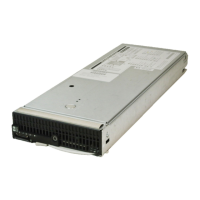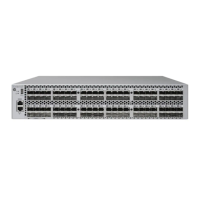TERM [\system-name.]$terminal-name
INT[ERRUPTS]
A group of items enclosed in brackets is a list from which you can choose one item or none. The
items in the list may be arranged either vertically, with aligned brackets on each side of the list,
or horizontally, enclosed in a pair of brackets and separated by vertical lines. For example:
FC [ num ]
[ -num ]
[ text ]
K [ X | D ] address
{ } Braces. A group of items enclosed in braces is a list from which you are required to choose
one item. The items in the list may be arranged either vertically, with aligned braces on each side
of the list, or horizontally, enclosed in a pair of braces and separated by vertical lines. For example:
LISTOPENS PROCESS { $appl-mgr-name }
{ $process-name }
ALLOWSU { ON | OFF }
| Vertical Line. A vertical line separates alternatives in a horizontal list that is enclosed in brackets
or braces. For example:
INSPECT { OFF | ON | SAVEABEND }
… Ellipsis. An ellipsis immediately following a pair of brackets or braces indicates that you can
repeat the enclosed sequence of syntax items any number of times. For example:
M address [ , new-value ]...
[ - ] {0|1|2|3|4|5|6|7|8|9}...
An ellipsis immediately following a single syntax item indicates that you can repeat that syntax
item any number of times. For example
"s-char..."
Punctuation. Parentheses, commas, semicolons, and other symbols not previously described must
be entered as shown. For example:
error := NEXTFILENAME ( file-name ) ;
LISTOPENS SU $process-name.#su-name
Quotation marks around a symbol such as a bracket or brace indicate that the symbol is a required
character that you must enter as shown. For example:
"[" repetition-constant-list "]"
Item Spacing. Spaces shown between items are required unless one of the items is a punctuation
symbol such as a parenthesis or a comma. For example:
CALL STEPMOM ( process-id );
If there is no space between two items, spaces are not permitted. In the following example, there
are no spaces permitted between the period and any other items:
$process-name.#su-name
Line Spacing. If the syntax of a command is too long to fit on a single line, each continuation line
is indented three spaces and is separated from the preceding line by a blank line. This spacing
distinguishes items in a continuation line from items in a vertical list of selections. For example:
ALTER [ / OUT file-spec / ] CONTROLLER
[ , attribute-spec ]...
!i and !o. In procedure calls, the !i notation follows an input parameter (one that passes data to
the called procedure); the !o notation follows an output parameter (one that returns data to the
calling program). For example:
CALL CHECKRESIZESEGMENT ( segment-id !i
, error ) ; !o
!i,o. In procedure calls, the !i,o notation follows an input/output parameter (one that both passes
data to the called procedure and returns data to the calling program). For example:
error := COMPRESSEDIT ( filenum ) ; !i,o
Notation Conventions 21
